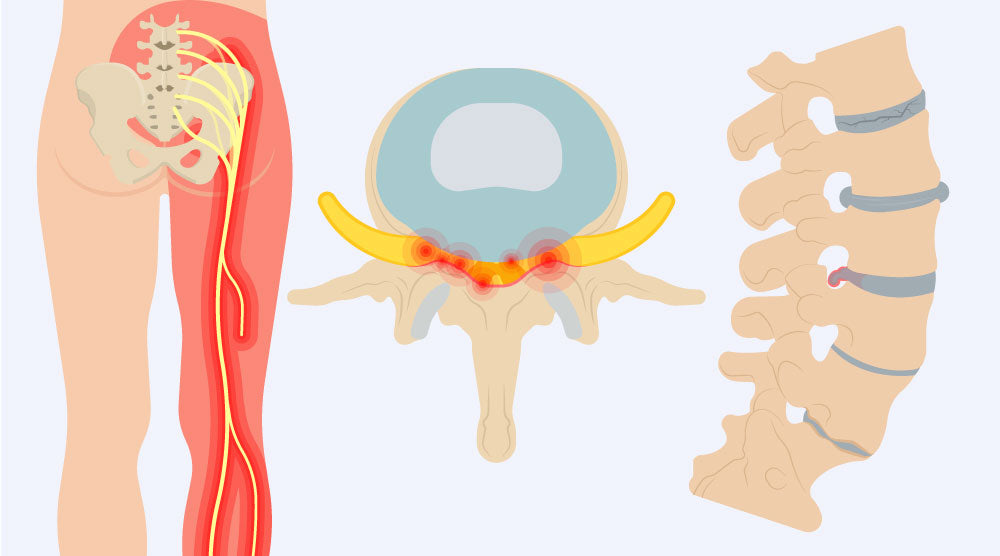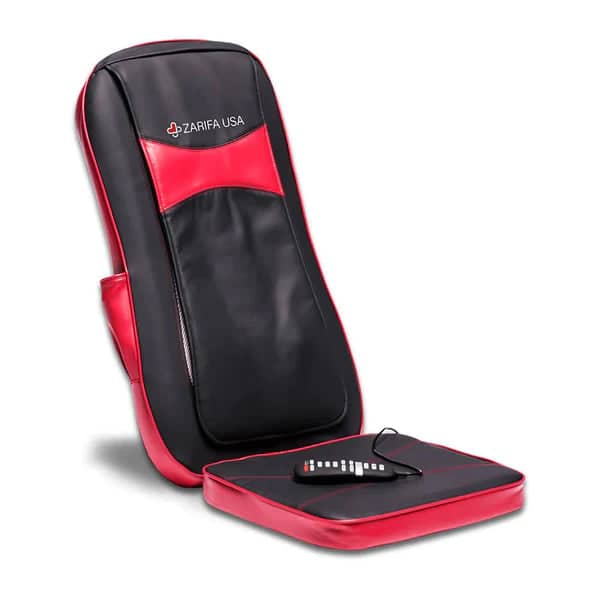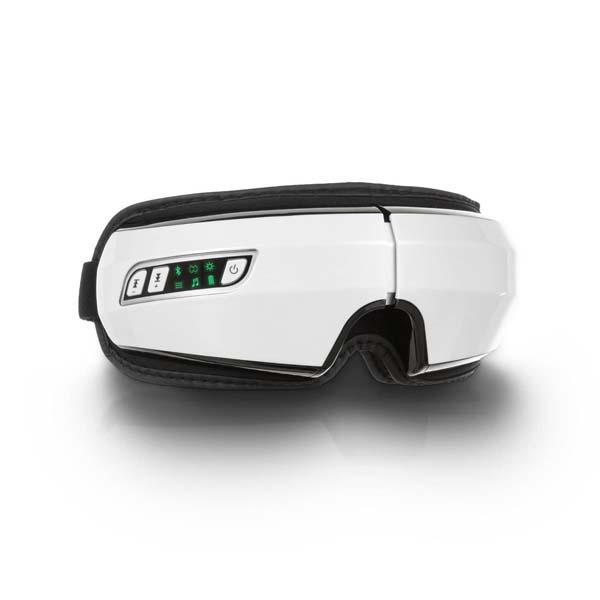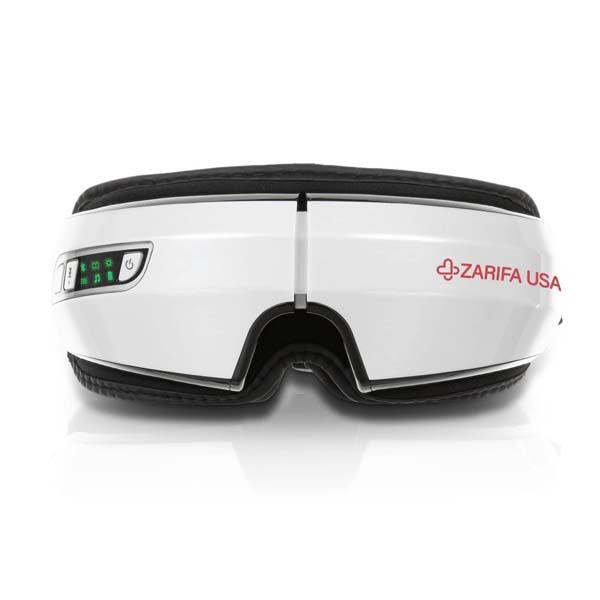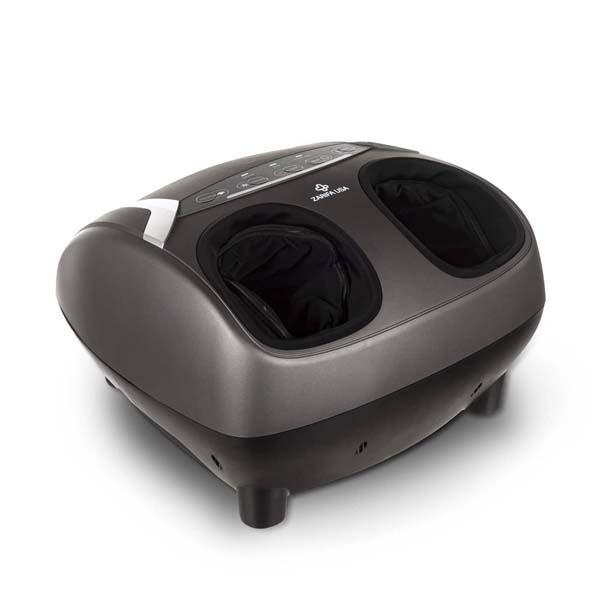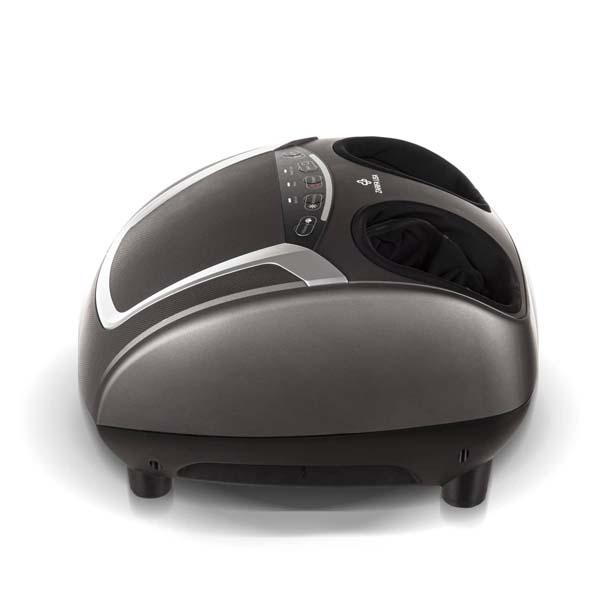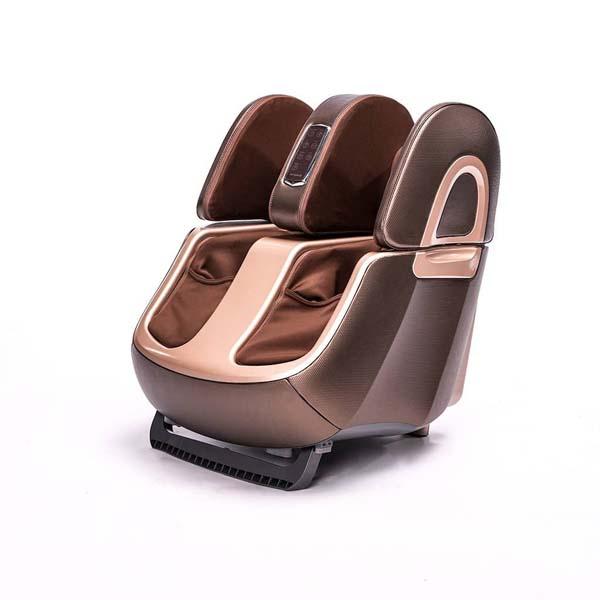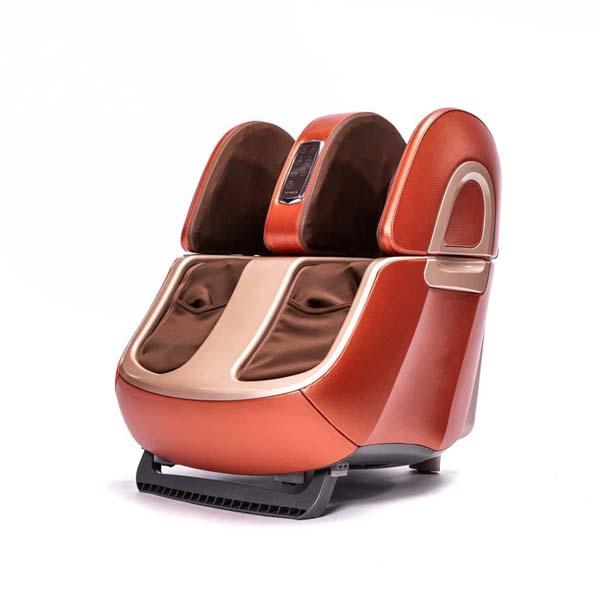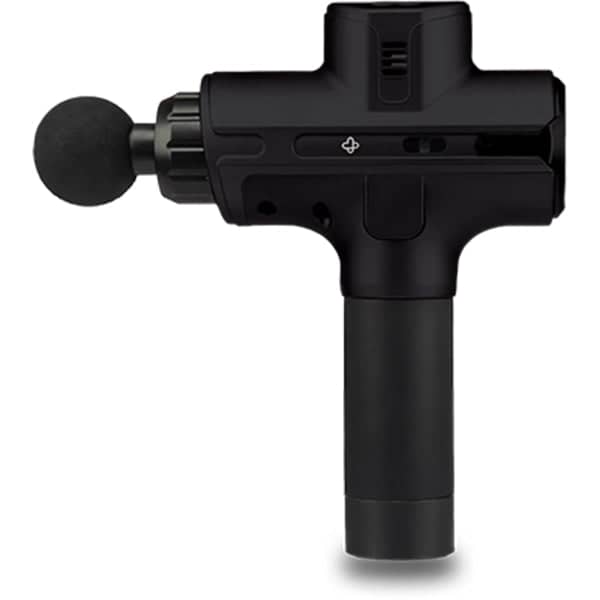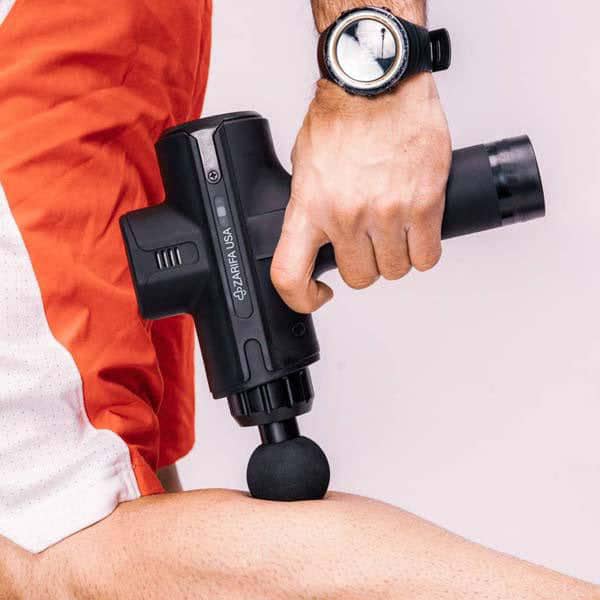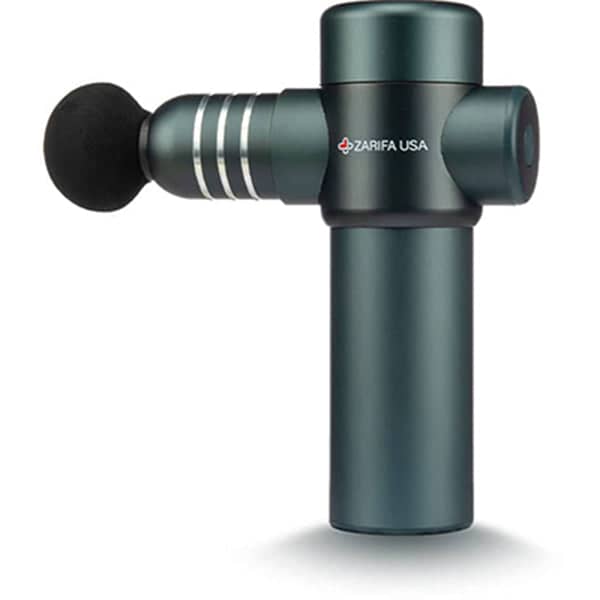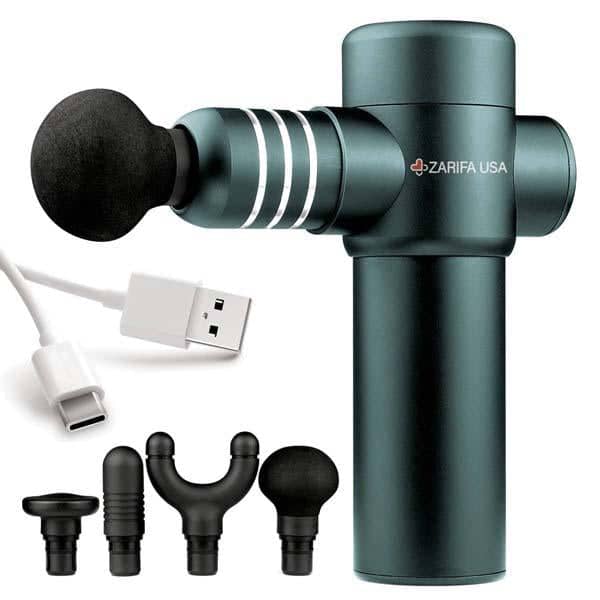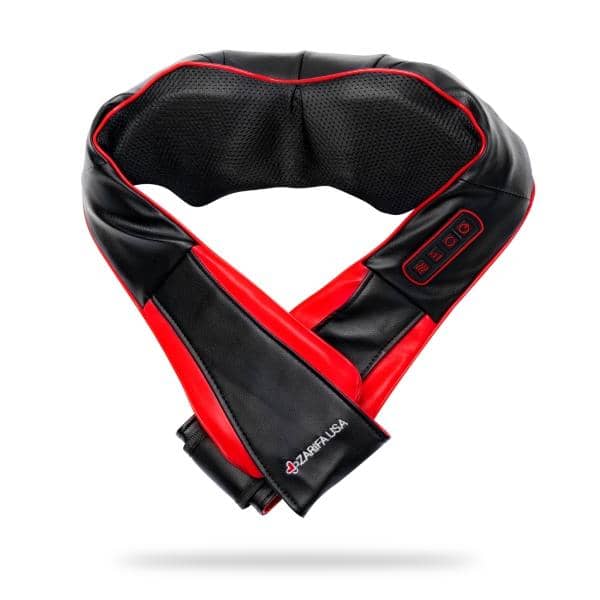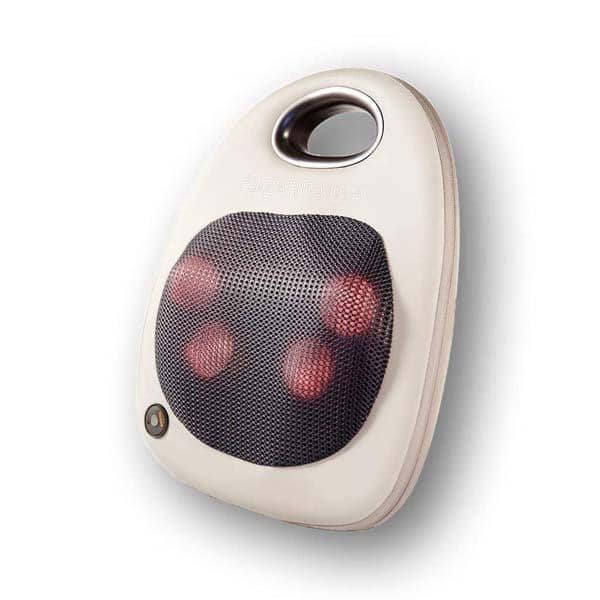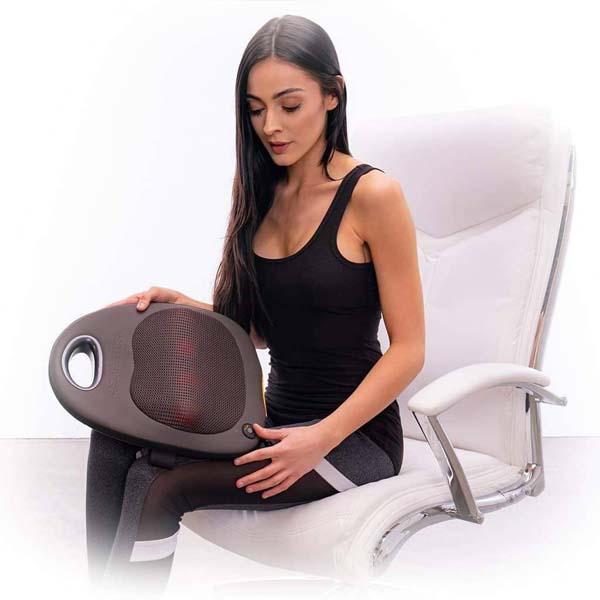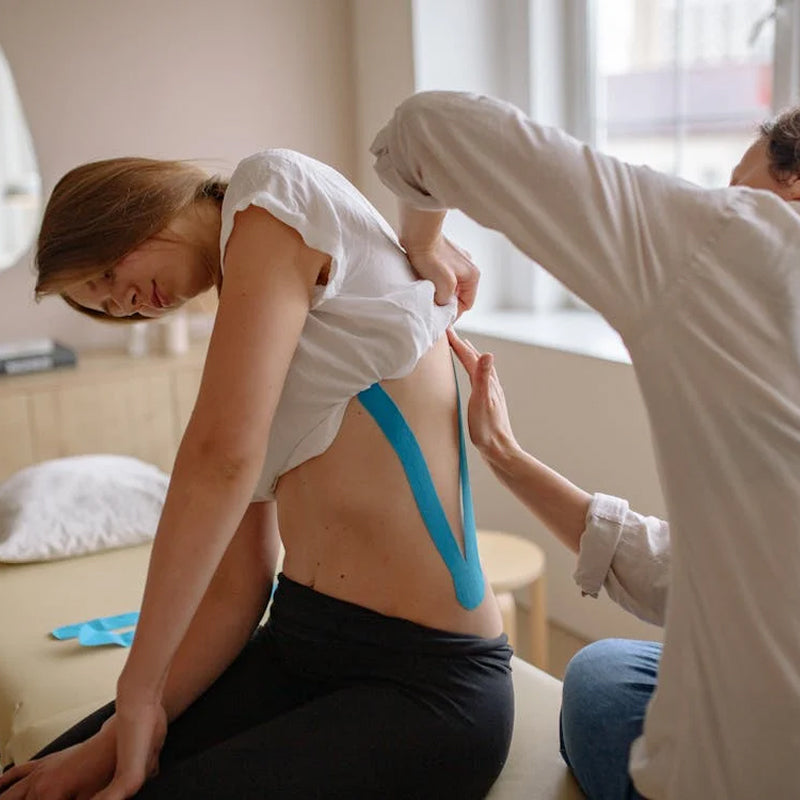Sciatica has become a misnomer in modern times. The term refers to inflammation of the sciatic nerve and is characterized by excruciating pain arising in the buttocks and leg region. However, many people now believe every leg pain to be sciatica which is not the case.
Sciatic nerve pain or sciatica can vary from a mild ache to severely debilitating pain that shoots down one’s leg. The pain is frequently common around the globe having a lifetime incidence between 13 and 40%. The discomfort usually affects one side of the body (one leg). In some cases, both sides of the body are involved.
Low back pain is a wider term used to describe pain arising in the back and buttocks region. Sciatica is a part of chronic low back pain. Almost 85% of Americans suffer from low back pain at some point in their lives.
Chronic low back pain (or sciatica) is the second most common cause of off days from work. Research suggests that resuming work after painful episodes of sciatica is difficult. Let us find out how this buttock and leg pain instill fear in the hearts of the patients.
Sciatica Signs And Symptoms
In most cases, sciatica goes away on its own. The time duration may vary from one individual to another. The average time taken for sciatica to self-resorb is between 2 weeks to 12 weeks. It is advised to seek medical attention if your sciatica does not go away within the mentioned time or you experience recurrent episodes.
Identifying low back pain is easy but reaching the conclusion that it is sciatica, may be tough sometimes. If you are experiencing the following symptoms, there might be a chance that you are suffering from sciatica:
- Throbbing, sharp pain radiating from your buttocks into the leg.
- Shock-like pain limited to the back and buttocks region
- Numbness in the thighs, legs, and/or feet
- Burning or tingling sensation traveling down the thighs
- Changes in pain intensity with change in posture.
- Having trouble in bowel and bladder control.
- Searing leg pain
Impingement Of The Sciatic Nerve
The underlying cause of these symptoms is the pinching of the sciatic nerve. The sciatic nerve is one of the largest nerves in the human body that innervates the buttocks, legs, thigh, and feet region. The tortuous course of the nerve makes it prone to getting impinged. Once impinged the nerve manifests the change in the form of neuropathic symptoms (pain, burning, numbness, etc.).
A 2020 study found that sciatica can be triggered when the sciatic nerve gets impinged between the greater trochanter and ischium. There are many reasons for this impingement of the sciatica nerve which are discussed below

Causes Of Sciatica:
There is a wide variety of abnormalities that can land you into leg pain called sciatica. The most common causes of sciatica include:
Piriformis Syndrome
Piriformis is a muscle located between your groin and leg. This muscle acts as an external rotator of the hip. The sciatic nerve passes adjacent to the piriformis muscle and therefore, is prone to get entrapped and impinged by the muscle.
Studies suggest that sciatica pain arising from sciatic nerve compression by piriformis muscle is characterized as piriformis syndrome. This issue is not very common but still is a significant cause of sciatica.
Pain, burning, or tingling can be felt across the buttocks, in the legs, or even in the feet. According to research, the most evident symptoms of this syndrome are:
- Buttock pain
- Pain that aggravates on sitting down
- External tenderness
- Limited movement (decreased leg raising)
Deep Gluteal Syndrome
The deep gluteal syndrome is a syndrome similar to piriformis syndrome and is often misdiagnosed as one. According to a 2016 study, pressure (extra) added on the sciatic nerve by the gluteal muscles leads to burning/tingling or radicular pain in the buttock/hip area. This is known as a deep gluteal syndrome and responds to endoscopic decompression very well.
Disc Herniation
Herniation of an intervertebral disc is the most common cause of sciatica. Your spine is composed of hard bony vertebrae and in between these vertebrae lies a softer cushioning material i.e. intervertebral disk/disc. This jelly-like substance can get squirted out of its position and impinge on the sciatic nerve. As per a 2019 study, disc herniation in the L4-S1 segment can lead to the development of sciatica.
Degenerative Diseases Of The Spine
Degenerative diseases such as arthritis can also put you at an increased risk of sciatica. There are two types of degenerative diseases namely osteoarthritis and rheumatoid arthritis. In both cases, there is the destruction of the bony surfaces of the intervertebral discs. This destruction leads to the formation of bone spurs. The bone spurs can impinge sciatic nerve and initiate radicular pain. According to a 2019 study, sciatica is the ultimate outcome of osteoarthritis of the spine and the onset of nerve pain is slower and gradual as compared to disc herniation.
Trauma/Injury
There are multiple ways by which you can fall into the abyss of sciatica. Trauma to the nerve is one of them. A roadside accident or a sports injury can lead to sciatica. Something as simple as lifting the shutter of a shop can put in agonizing sciatic nerve pain. Falls in old age and sports injuries too can make you more prone to low back pain. Fracture of the vertebra can be a contributing factor.
Spinal Stenosis
Spinal stenosis is a condition where there is a narrowing of the spine that leads to extra pressure on the sciatic nerve. The mean prevalence of spinal stenosis was found to be between 11 and 39%. According to a study, the most frequent cause of sciatic nerve pain is spinal stenosis, followed by disc slip/herniation of the intervertebral disc. Patients with spinal stenosis usually experience extreme low back pain.
Another study identifies spinal stenosis as a major cause of sciatica, alongside disc slip, and degenerative spine disease.
Spondylolisthesis
Another cause of persistent low back pain is spondylolisthesis. It is a spinal condition of the lower vertebrae that puts you in an awkward position. In spondylolisthesis, the lower vertebrae slip forward as compared to the bone beneath it. This forward displacement puts excessive pressure on the adjacent sciatic nerve leading to persistent low back pain and stiffness.
The condition can be congenital, isthmic (due to fracture of bone), or degenerative. It is more common in young athletes who participate in sports that stretch the lumbar spine.
According to studies, decompression plus fusion is the better way of treating degenerative spondylolisthesis as compared to decompression alone.
Risk Factors For Sciatica
It is an established fact that lifestyle risk factors increase your risk of getting hospitalized for sciatica. According to an analysis of cohort studies, different lifestyle risks are identified including obesity, cigarette smoking, etc. The study found out that smoking and obesity increase the risk of hospitalization while walking and cycling reduced it.
A study found that smokers with sciatica had a sedentary life (low physical activity) which aggravates sciatica. Men with low back pain should be checked for social and lifestyle factors that may act as triggers.
The most evident risk factors for sciatica are discussed below:
Obesity
Being overweight or obese puts you at risk of various health risks. One of these health risks is sciatica. According to a 2020 study, obese patients are at a greater risk of developing radiating sciatic nerve pain. There is an evident link between obesity and sciatica.
The additional pressure of a fat tummy on your back muscles is expressed in the form of pinched nerves. Therefore, sciatica is likely to develop. In a 2017 study, it was found that physical activity protects against sciatica while overweight is considered a significant risk factor in women.
Smoking
Inhalation of carcinogens from a cigarette not only ruins your respiratory health but also pushes you into the ditch of low back pain. According to a meta-analysis, smoking acts as a risk factor for physical impairment that eventually leads to backache.
According to a 2018 umbrella review, low back pain/sciatica can be attributed to poor general health and psychological stress. Poor habits such as smoking play a part in increasing the risk for a future episode of sciatica.
Improper Posture
An improper posture paired with prolonged sitting puts you at a greater risk of developing sciatica. Sitting on an office chair for long periods puts you closer to sciatica with every passing day, studies suggest.
As per a review, a flexed posture is directly linked to sciatica. Another study highlights the importance of a proper posture. It states that correction of posture can relieve sciatica symptoms. Improper posture while using a cell phone can cause sciatica and is termed as cell phone sciatica.
Obese individuals habitual of carrying weights in awkward postures are more likely to land in the hospital with sciatica as compared to those who follow proper posture ergonomics, a study suggests.
Age
Aging is a degenerative process where the bones wither off. Bone spurs develop as a result of this wear and tear. Though sciatica is also found to be prevalent in young people, older members of society face it more.
According to research, sciatica in old age manifests itself in a more persistent form but the pain is less severe. However, in the young sciatica symptoms are aggressive but there is a good chance of early resolution. Spinal stenosis is the major cause of sciatica in older populations.
Occupation
Your occupation plays a critical role in determining your health status. Coal mine workers have severely compromised respiratory health due to poor ventilation conditions. Similarly, people destined to lift heavy loads or work stuck to a chair are at a greater risk of developing sciatica.
According to research, carrying heavy objects frequently, sedentary work, increase the risk of low back pain and sciatica.
Diabetes
Diabetes has negative impacts on the nervous system i.e. diabetic neuropathy. Prolonged diabetes can lead to nerve damage and eventually result in sciatica.
Diagnosing Sciatica
The main method of diagnosing sciatica is by history taking and clinical examination. Imaging might be needed in some cases.
History
A complete history of the pain is necessary. The doctor asks for information on the area involved in the radiating pain. The healthcare provider may ask for pain drawings to helo identify the pain distribution.
Clinical Examination
As per guidelines from the North American Spine Society, there are different tests that may be conducted by the physician to reach the diagnosis of sciatica. The tests include:
- Manual muscle test
- Sensory testing
- Supine straight leg raising test
The straight leg raising test helps determine the area of nerve compression (L5 or S1). reduced leg movement is seen in patients with lumbar disc herniation.
Imaging
Imaging is indicated when the physician suspects underlying bone abnormality. As lumbar disc herniation is a common cause of sciatica, MRI scanning is considered the gold standard for imaging (due to its 97% diagnostic accuracy).
CT scans can also be used where MRIs can not be taken.
Treatment Options
Sciatica can be managed in the following ways:
Massage Therapy
The most effective non-pharmacological way of alleviating sciatica symptoms is massage therapy. The healing touch of a massage therapist can bring back life and mobility to your spine. Massage improves blood flow, reduces pain, and increases the mobility of the spine.
Research shows that massage (spinal manipulation) is the most effective way of reducing low back pain. According to another study, massage therapy provides long-lasting pain relief to sciatica patients.
You can also take help from massage chairs and electronic massagers to achieve pain relief. According to the latest study chair massage provides excellent pain relief and improvement in mood. This type of massage is cost-effective too, as concluded by a study ..
Pain Killer Medications
You can try OTC pain killers such as ibuprofen and naproxen sodium to subside the radiating pain. Muscle relaxants may also be added. Some physicians also prescribe anti-depressants to calm down the excited nerves.
Hot/Cold Therapy
Alternative hot and cold therapy is also an efficacious step in treating sciatica. Heat therapy eases the sore muscles while cold therapy reduces inflammation.
Stretches And Exercises
Another potent way of subsiding sciatica symptoms is by carrying out light exercises and stretches. There are some very effective stretches that you can make a part of your daily routine. Most effective stretches for sciatica include:
- Pigeon pose (reclining and sitting)
- Leg to chest pose
- Knee to the opposite shoulder
- Standing hamstring pose
Steroid Injections
In cases unresponsive to physical therapy and medications, steroid injections are preferred. A steroid is injected into the spine to help remove inflammation and heal the damaged nerve.
Surgery
Surgery is usually reserved for severe, chronic, refractory sciatica cases. Surgical decompression of the nerve is done to release pressure from the sciatic nerve. This is the only treatment option in cases such as spinal stenosis and spondylolisthesis.
Conclusion
Sciatica can prove to be a nightmare. The excruciating pain that radiates down your leg is the result of sciatic nerve impingement at the L5-S1 level. It can be caused by trauma, arthritis, disc slip, spondylolisthesis, or spinal stenosis.
Obesity increases your risk of acquiring it. Management includes analgesics, massage therapy, steroid injections, and physical therapy. Surgery is reserved for severe cases only.

